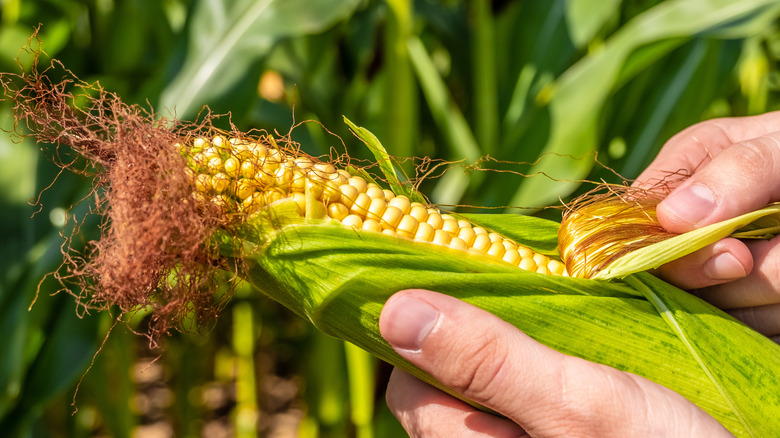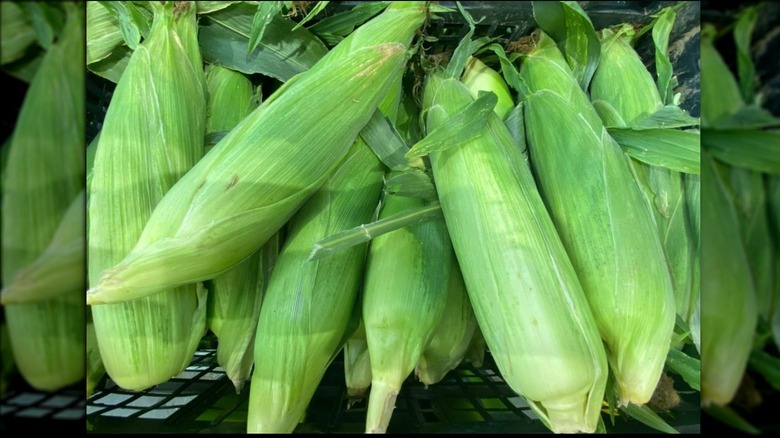Why You Should Try Leaving The Husk On When You Sous Vide Corn
First off, we're starting from the assumption you'll be using the sous vide method to cook that still-in-the-husk, fresh from the farmer's market corn on the cob you've got there. It's just, other cooking methods involve exposing those tender kernels directly to intense heat. While the Maillard reaction has its allure, grilling or roasting corn on the cob will inevitably sacrifice some degree of flavor and moisture.
Now, if you're making, say, our Grilled Mexican Street Corn recipe, that shouldn't be a problem because the idea there is to experience the corn as it relates to the intricate play of seasonings and chemical reactions. But if you're there for that juicy burst of earthy sweetness, or if you're planning on slicing the kernels off to bake into, say, this Creamy Corn Pudding recipe, then a gentler and more precise cooking method might be preferable. And that, of course, is what the sous vide method of cooking corn on the cob offers.
With the sous vide method, the corn cobs are encased in a vacuum-sealed membrane and placed in a dynamic bath heated to precisely 183 degrees Fahrenheit — the temperature at which corn's pectin breaks down, which yields a "bright, fresh crunch" (via Anova). The result is optimal flavor, moisture, and bite. If only you could sous vide corn on the cob in the husk, while you're at it. Well, it turns out you can, and here's why you might want to try.
Leaf-wrapped food tastes more flavorful
Cooking corn on the cob in the husk goes a long way toward protecting freshly picked corn from the drying effects of direct, intense heat, according to registered dietitian Kelly Jones (via All Recipes). And that can free you up to focus on amplifying the flavor with the grassy notes of the husk and silk, per Serious Eats. That's something that cooking corn on the cob with the husk-on always accomplishes, at least theoretically. It's just that when your cooking method is roasting or grilling, those subtleties can get lost in a way that doesn't happen with sous vide.
Leaves and husks, including grape, banana, and corn, are used to wrap foods before cooking throughout numerous cultures, according to chef Pati Jinich, who, among other things, hosts the award-winning PBS television series, "Pati's Mexican Table" (via her website). In the case of the Mexican tamale, for example, corn husks, in particular, seal in a moist flavor. But they also "impart their own essence, fragrance and taste," Jinich notes.
What corn on the cob has going for it that tamales do not is that the husk is already on the corn cob. It's just a matter of trimming off the excess at each end and removing the leaves and silk — after you've already cooked your corn cobs. And that's simple, according to Jones, who recommends using clean, oven-safe gloves or letting the corn cobs cool first.

